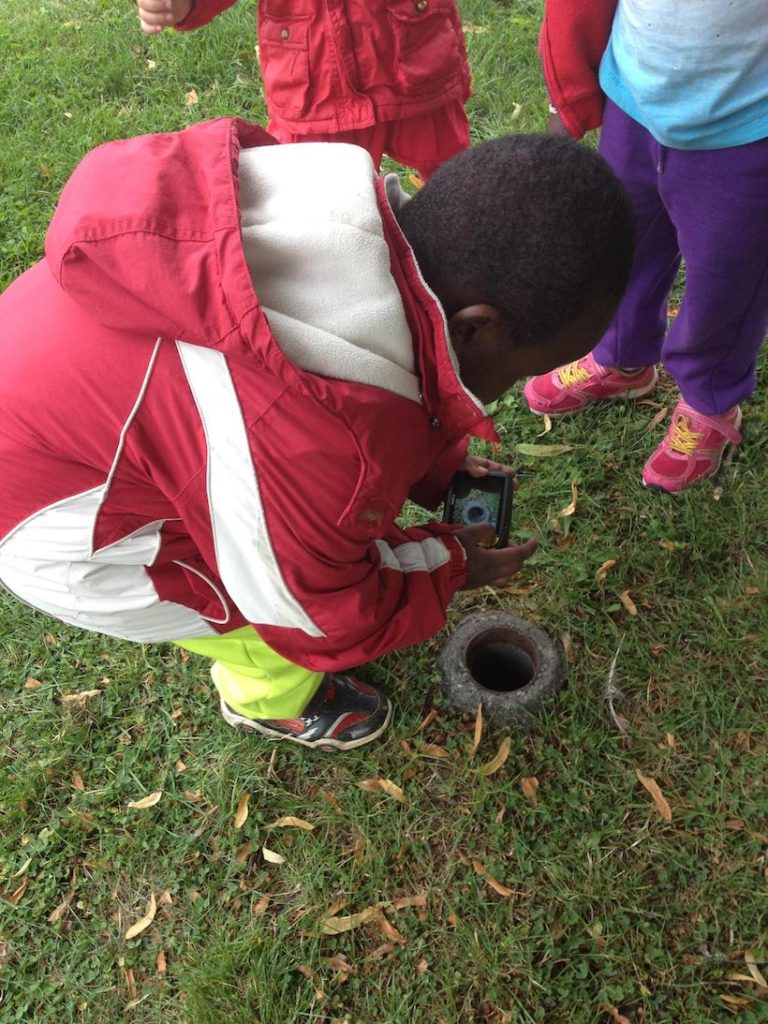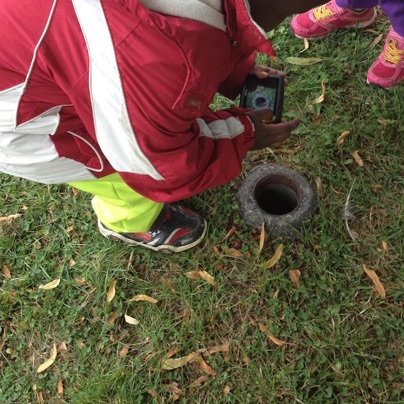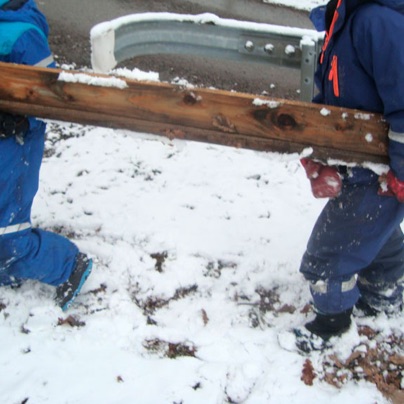
My work during my studies in the Master’s program is about film education in a digital era. The work has a sub-heading – ”to place the children and the camera in the centre”, which is also a suggestion of a possible way to continue with film education. The work of putting the children in the centre of film education is presented in my exam text. The other possible way, where I put the camera at the centre, is presented at Konstfack’s spring exhibition, where I do a workshop inside a Camera obscura.
Film history either starts in the first official film show by the Lumière brothers 1895, or it starts in the still image. In both ways the technology is central; either the projector or the camera, which in turn is made by man. Man has designed a camera to save images and a projector to show images. In my work, I ask the question: What happens if film history begins with the image that occurs inside Camera obscura. There, the image is created by itself, without the influence of man. All that is required is a dark space, a hole that emits light and a surface for the light to fall on. Unlike the first still images that were black and white and the Lumière’s brothers images that were black and white with no sound; the image in the Camera obscura is moving, in color, upside down and surrounded by sound. Man have invented tools to save the image that occurs in Camera obscura, but the image itself, which is the prerequisite for filming, we have not invented, it’s just there.
The difficult thing about writing about the image in Camera Obscura is that it does not have a name. During the Spring exhibition at Konstfack, I invite visitors to contribute suggestions on what the image could be. The camera obscura I exhibit at the Spring Exhibition is designed by Kalle Boman and Anna Sohlman.
Exhibition was designed by Kalle Boman and Anna Sohlman.
Mitt arbete under masterutbildningen handlar om Filmpedagogik i en digital era. Arbetet har en underrubrik – “att sätta barnen och kameran i centrum”, vilket också är ett förslag på en möjlig väg att gå vidare med filmpedagogiken. Arbetet med att sätta barnen i centrum för filmpedagogiken presenteras i min examenstext. Den andra möjliga vägen, där jag sätter kameran i centrum, presenteras på Konstfacks vårutställning, där jag gör en workshop inne i en Camera obscura.
Filmhistorien startar oftast i den första officiella filmvisningen av bröderna Lumières 1895, eller så börjar den i stillbilden. Gemensamt för de båda historieskrivningarna är att tekniken är central; projektorn eller kameran, som i sin tur är tillverkade av människan. Människan har konstruerat en kamera för att spara bilder och en projektor för att kunna spela upp bilderna igen. I mitt arbetet ställer jag frågan: vad händer om filmhistorien börjar med bilden som uppstår inne i Camera obscuran. Där uppstår bilden av sig själv, utan människans inverkan. Det enda som krävs då är ett mörkt utrymme, ett hål som släpper in ljus och en yta för ljuset att falla på. Till skillnad från de första stillbilderna som var svart-vita och Bröderna Lumières bilder som var svart-vita och utan ljud; är bilden i Camera obscuran rörlig, i färg, upp och ner och omgiven av ljud. Vi människor har uppfunnit verktyg att spara bilden som uppstår i Camera Obscuran, men själva bilden som är förutsättningen för att vi ska kunna filma, har vi inte uppfunnit, den bara är.
Det svåra när det gäller att skriva om bilden i Camera Obscuran är att den inte har ett eget namn. Under vårutställningen på Konstfack inbjuder jag besökarna att bidra med förslag på vad bilden skulle kunna heta. Camera obscuran jag ställer ut på Vårutställningen har konstruerats av Kalle Boman och Anna Sohlman.







